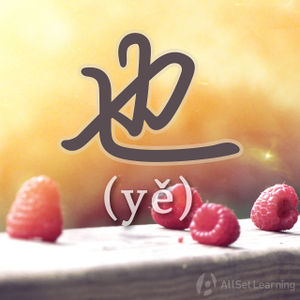Using "ye" and "dou" together
-
Level
-
Similar to
-
Used for
-
Keywords
If you are trying to draw similarities amongst a group, you will want to pair two key words together. You will want to use 也 (yě) first followed by 都 (dōu) to express that a group of people have something in common.
Structure
If you're using 也 (yě) and 都 (dōu) in the same sentence, remember to put 也 (yě) first:
Subject + 也 + 都 + Verb / Adj.
Examples
- 他们 也 都 是 法国 人。They are also all French people.
- 我们 也 都 喜欢 喝 啤酒。We all like to drink beer too.
- 你们 也 都 是 学生 吗?Are you all students too?
- 我 的 三 个 孩子 也 都 是 男孩。 My three children are also all boys.
- 我们 办公室 的 女 同事 也 都 结婚 了。Our female colleagues are all married too.
- 这 个 酒吧 里 也 都 是 年轻 人。In this bar also, everybody is young.
- 我们 喜欢 来 这里,孩子 们 也 都 喜欢 来 这里。We like to come here, all the kids also like to come here.
- 老板 经常 加班,你们 也 都 加班 吗?The boss constantly works overtime, do you all also work overtime?
- 他们 是 你 的 朋友,他们 也 都 是 我 的 朋友。They are your friends, they are all my friends too.
- 北京 的 房子 很 贵,别 的 大 城市 的 房子 也 都 很 贵。Apartments in Beijing are very expensive, in other big cities all apartments are also very expensive.
- 这里 的 同事 也 都 很 好。All the co-workers here are also really good.
- 她 的 妹妹 们 也 都 很 漂亮。Her little sisters are also very beautiful.
- 这 家 店 的 面包 不 错,别 的 点心 也 都 很 好吃。This store's bread is not bad, the other snacks are also very delicious.
See also
Sources and further reading
Books
- Integrated Chinese: Level 1, Part 1 (3rd ed) (pp. 31-2) →buy
- New Practical Chinese Reader 1 (新实用汉语课本1) (p. 88) →buy
- 40 Lessons for Basic Chinese Course (基础汉语40课上册) (p. 73)→buy
- Integrated Chinese: Level 1, Part 1 (3rd ed) (pp. 53-4) →buy
- New Practical Chinese Reader 1 (新实用汉语课本1) (p. 88) →buy
- Basic Patterns of Chinese Grammar (p. 35) →buy



